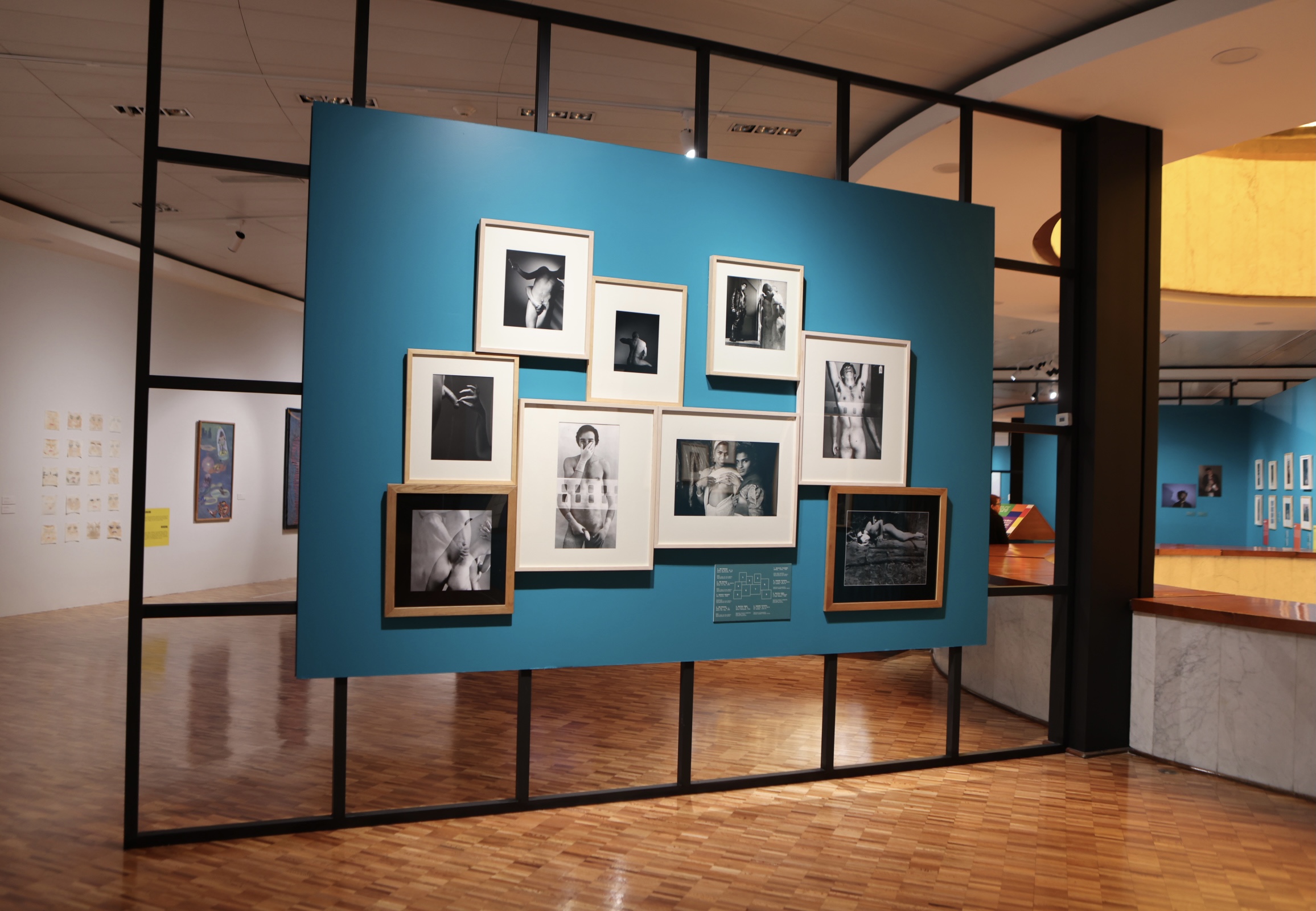
Article
Cracking the Museums: 'Imaginaciones radicales' at the Museo de Arte Moderno
by fernanda ramos mena
Reading time
7 min
Throughout the current presidential administration, the cultural sphere in Mexico has adopted the motto, “Leave no one behind; leave no one out”—a motto whose aim is to give spaces of representation to groups historically excluded from official accounts. At first glance, this postulate is a reaction to the narratives that have annulled non-hegemonic histories. Nevertheless, quotas are not enough to compensate for the structural violence—whether internal or external—of the country’s museum institutions*1. As formulated by the U.S. queer feminist scholar Jennifer Tyburczy, museums are not only spaces for representation; they also perform the construction of emotions and stories around those who “inhabit the margins.”
In this vein, Mexico City’s Museo de Arte Moderno presents Imaginaciones radicales. Una lectura disidente de la colección (“Radical Imaginations: A Dissident Reading of the Collection”). The curating, led by Brenda J Caro Cocotle, Lucía Peñalosa, and Carlos Segoviano, constructs a temporary space for the sociability and plurality of sex and gender diversity. This is not the first exhibition in this space to address themes outside of compulsory heterosexuality*2, but it is the only one in which a historical review has been carried out that takes its collection as a starting point, overflowing into a cross-dialogue with contemporary sex-dissident artists.
This project began in the pandemic lockdown as part of International LGBTTTQI+ Pride Day as an online mini-exhibition, where the curatorial team undertook a critique of the masculine/feminine binary of museums and their collections. Taking the exhibition from the internet to the galleries, and taking it outside of Pride celebrations, is a (minuscule) starting point for generating critical discourses about who is and who is not granted the possibility of exhibiting in these spaces, based on questions of career, sexuality, gender, and social class. This exhibition also allows us to reflect on the role of museums might be—beyond the exhibition and conservation of works: Which corporealities circulate it? To whom are their contents directed? These questions are especially necessary in times of social instability. Although I cannot answer them in this article, it seems to me important that they be considered when carrying out projects in museums that aim to transgress the prevailing official narratives.
Imaginaciones radicales is an intergenerational conversation that includes more than 200 works situated within historical narrative, painting, photography, and installation—drawn from the museum’s collection, other collections, and contemporary artists.
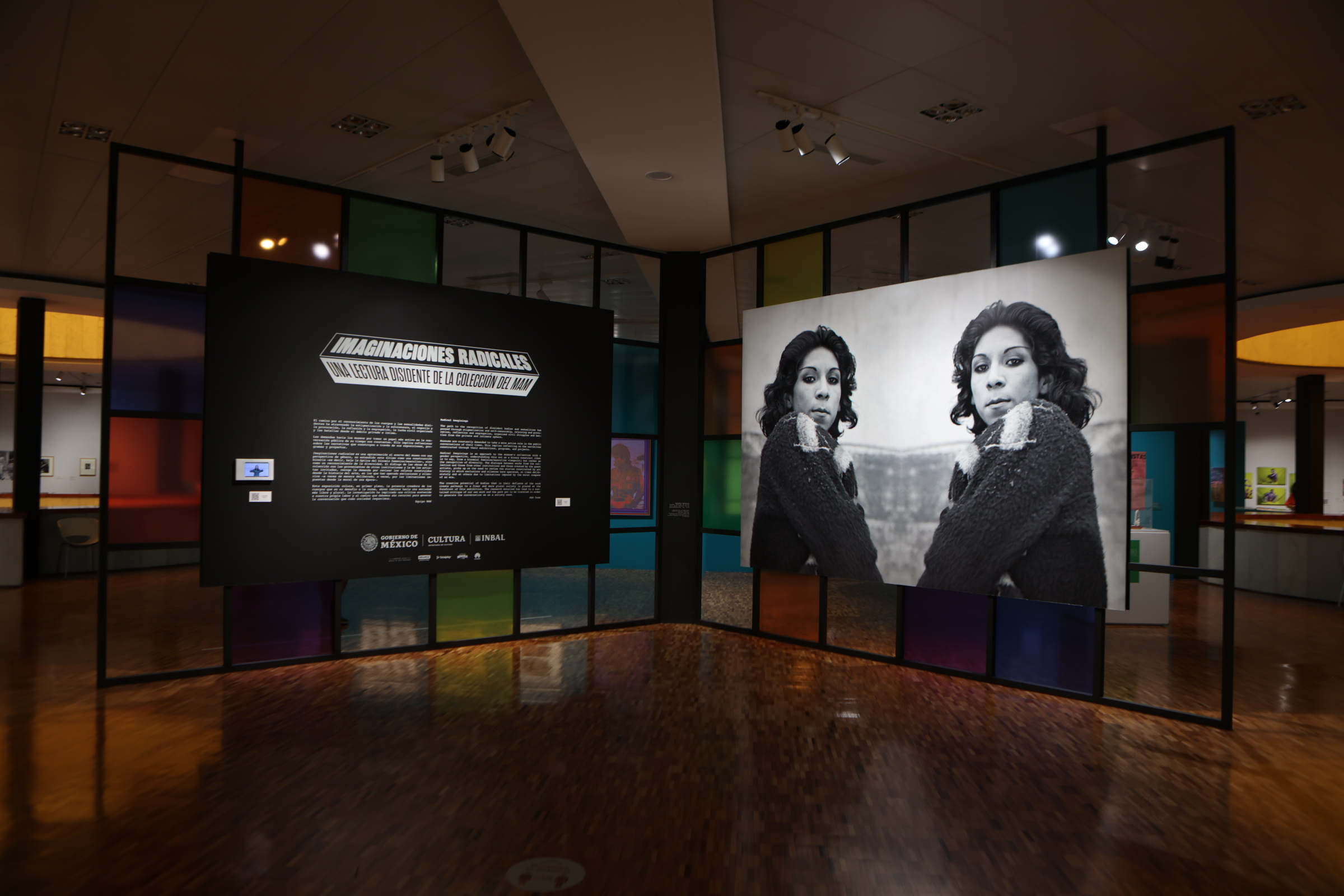
We are greeted by a photomural in which a travesti poses proudly, and thus with their gaze challenges the lens that portrays them as imprisoned. The year of this shot is 1936. In this section titled Desafío al código (“Challenge to the Code”) what stand out are photos and paintings of the corporealities of jotixs, marikas, and lenchas that react against the norm by performing affectivites that question the masculine hegemony of being virile, macho, and strong, as well as the feminine one of being fragile, submissive, and passive.
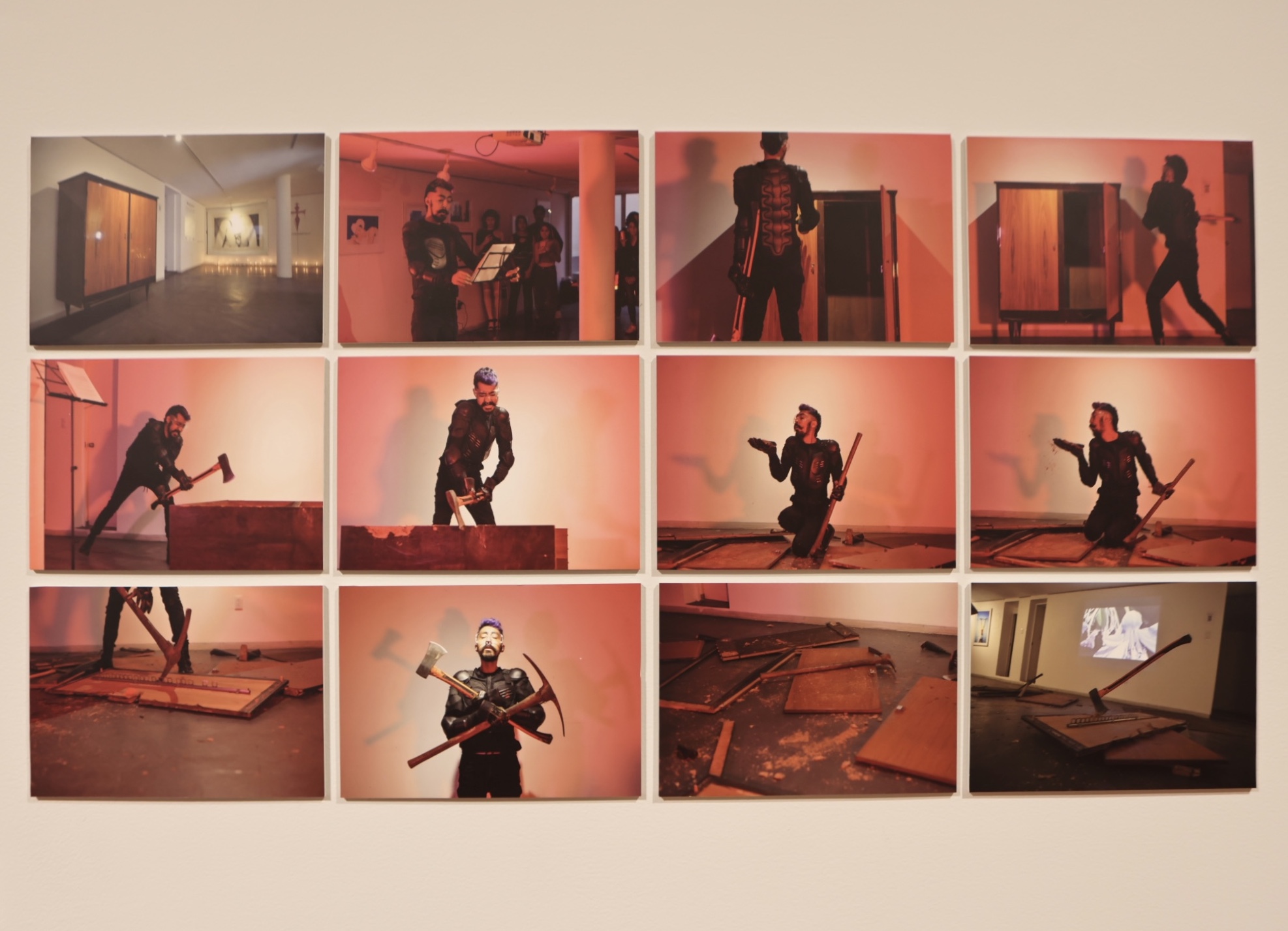
The challenge to the codes implies an iconographic and linguistic rupture, as evidenced in El Santo Sidario (1991) by Taller de Documentación Visual—active between the 1980s and the 90s—in which angels stricken by AIDS watch over and observe a body crucified full of sores. Along the same lines, the love letter from visual artist Juni Aranda to her best friend is displayed, encoded with fruit figures reminiscent of stickers from the 90s. Likewise with Ádios al clóset (2022), in which Lechedevirgen Trimegisto shows how the expression “coming out of the closet” contains violence based in the heterocisgender system that psychologically damages sex-dissident bodies.
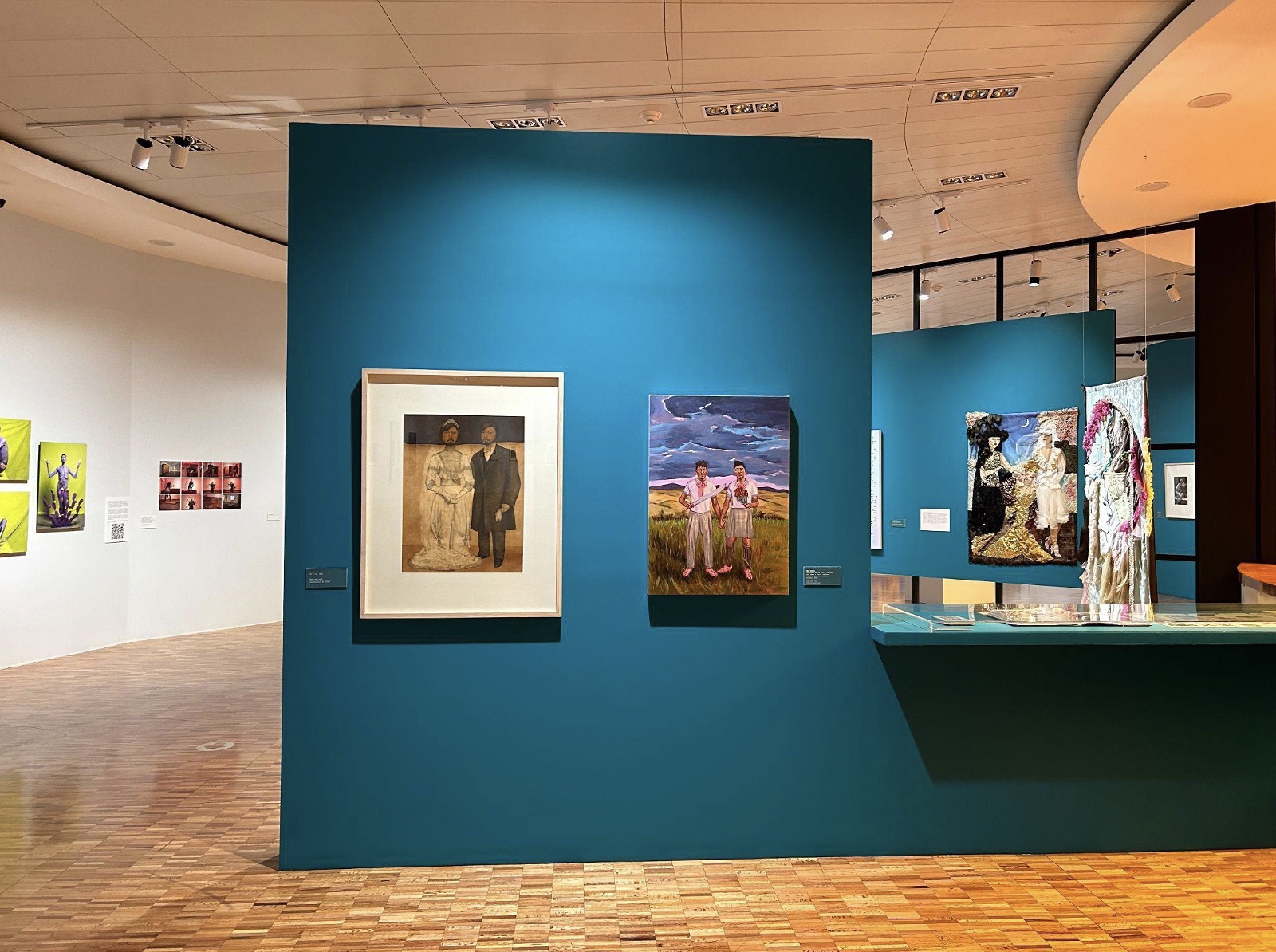
In the second section, Identidades profanas: más allá de la norma sexo-género (“Profane Identities: Beyond the Sex-Gender Norm), the masculine/feminine performativity is diluted and mutates chimerically. The works Yo y yo (s/f) by Nahum Zenil and Uniforme (2023) by Mar Coyol break binary representation by appealing to non-binary and transvestite subjectivities. In turn, the photos from Archivo de la Memoria Trans take us among some emotional archives of the trans community, which since the 1970s has recorded other ways of making a non-parental family: we observe their complicity, their fun, and their demand for the right to joy, and in resistance to the violence that oppresses their bodies.
In the case of the photographic series Lenchas y Marimachas (2019), Liliana Hueso claims the non-regulated body of those who self-identify with a basis in their masculinity and call themselves machorras. For her part, Alicia Cruz uses photography to portray non-binary friends and trans men who take into account the menstruating body, challenging what it means to portray a masculine corporality that deviates and reacts to conventions and stereotypes.
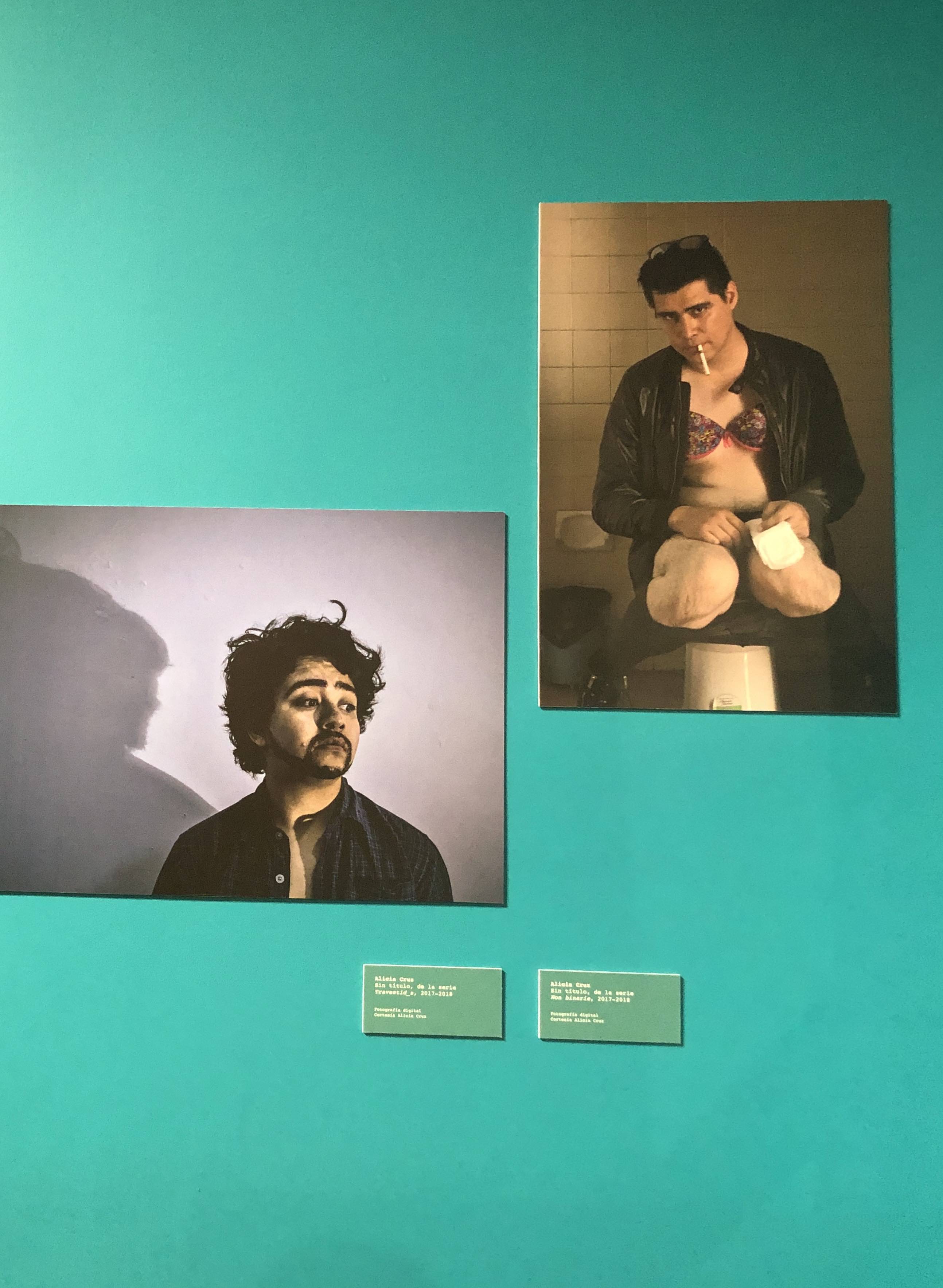
A work that closes Identidades profanas and that functions as a prelude to the following section is Katia Tirado’s post-porn performance Exhivilización: Las perras en celo, in which two women dispute the control of pleasure and sexual desire while enjoying the consensual activity of BDSM practices and question the very role of penetration and its binary.
Miradas transversales del deseo (“Transversal Gazes of Desire”), the third nucleus of the exhibition, takes into account the bodily drive as a political power that transgresses the scopic regime of the healthy, sexually attractive and active body. Here what’s proposed is an exchange of glances that escape desire towards other possibilities of feeling, arousing, and ejaculating.
Via the maimed, sick, and mutilated transvestite body, the works of artist Adolfo Riestra allow us to reflect on who, to whom, and how one has the right to desire. Karl Frías García in Amor espacial que provoca lluvias (2020) takes us within the sexual desire of monstrous, fat, and fascinating bodies that in an ejaculatory power create a puddle from which flowers grow. In this same vein, Omar Gámez, in his photographic series Flores de México (2016), produces poetic images in which his friends water flowers using their ejaculation. What remains is the vestige on top of the flower arrangement.
The closing part of the exhibition leaves us joking about how our own desires become an orgasmic collective power to break the taboos that are perpetuated around sexualities and gender.
The exhibition’s public program includes presentations, guided tours, workshops, and performances with the active presence of various artists: Terry Holiday, Mar Coyol, Lechedevirgen, Lia García La Novia Sirena, Archivo de la Memoria Trans, and the drag artist Yolanda, among others. With their participation, the artists have re-signified and expanded the curatorial reading towards their own, collective perspective, one that promotes institutional criticism with a basis in affectivity and care. Thus, Imaginaciones radicales not only questions the binary representations of the heteronorm, but also acts as a trigger for non-binary corporealities to occupy the museum facilities, transgress them, and—for a moment—break the state and patriarchal structure on which they are constructed.
*A dream: to crack the museum in its hierarchical conception and perhaps, one day, to be able to tear it down. Museum institutions have the social and political responsibility to disseminate stories: nevertheless, these spaces are not essential for the subjectivities that inhabit and challenge the regulatory framework. Non-hegemonic corporealities, sexualities, and genders will continue to exist despite their setbacks*3.
Translated to English by Byron Davies
*1: Budget cuts, subcontracting of personnel under the Chapter 3000 scheme, untimely payments, a lack of rights to social security, job insecurity, hiring practices that are ableist, based on cronyism, institutionalized gender and sexual violence, as well as the abuse of power.
*2: In June 2015 activities and exhibitions of the International Festival for Sexual Diversity were carried out that included ¿Neomexicanismos? Ficciones identitarias en el México de los ochenta (“Neo-Mexicanisms? Identity Fictions in the Mexico of the Eighties,” 2011) and Detrás de los andamios (“Behind the Scaffolding,” 2022), which addressed notions of gender and sex-dissident sexuality.
*3: This paraphrases an idea by the Argentine curator and teacher Romina Resuche, whom I heard in a session of the Archives and Activations program.
Published on July 31 2023